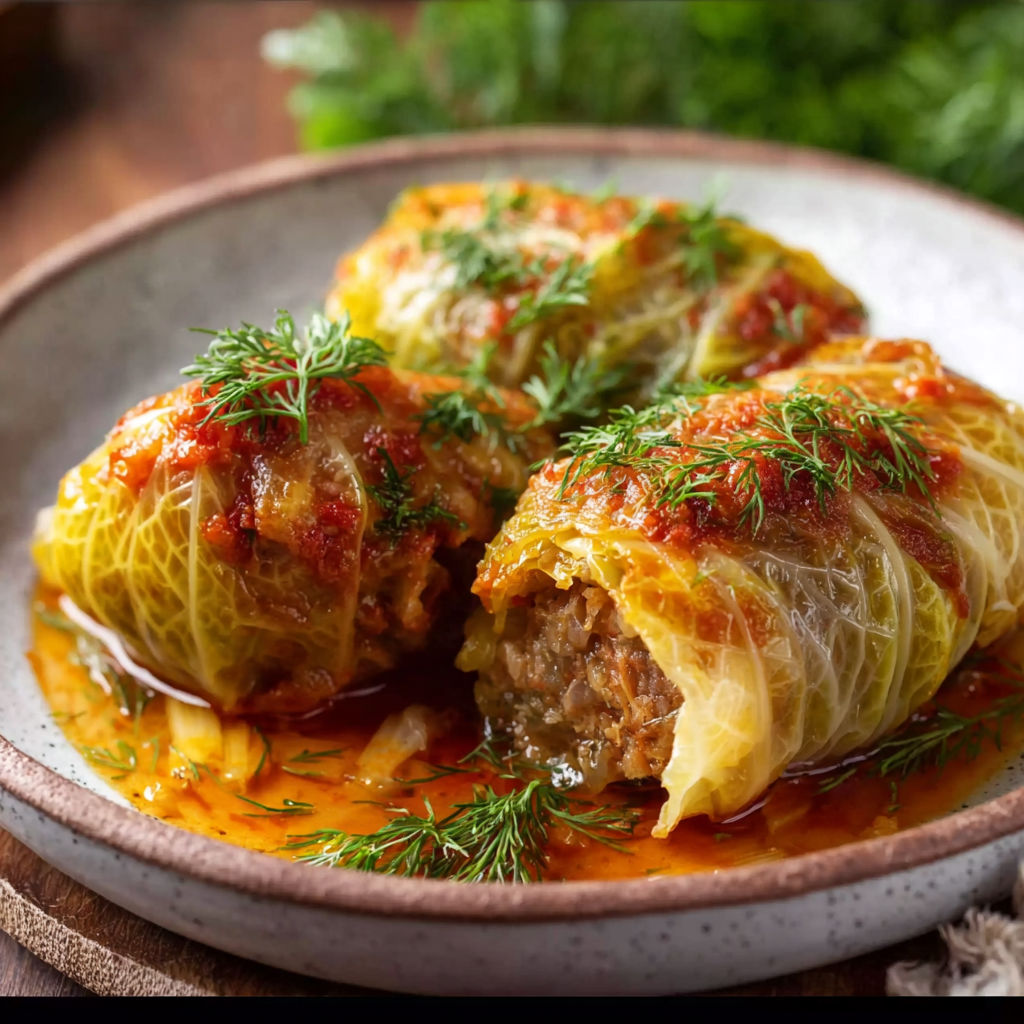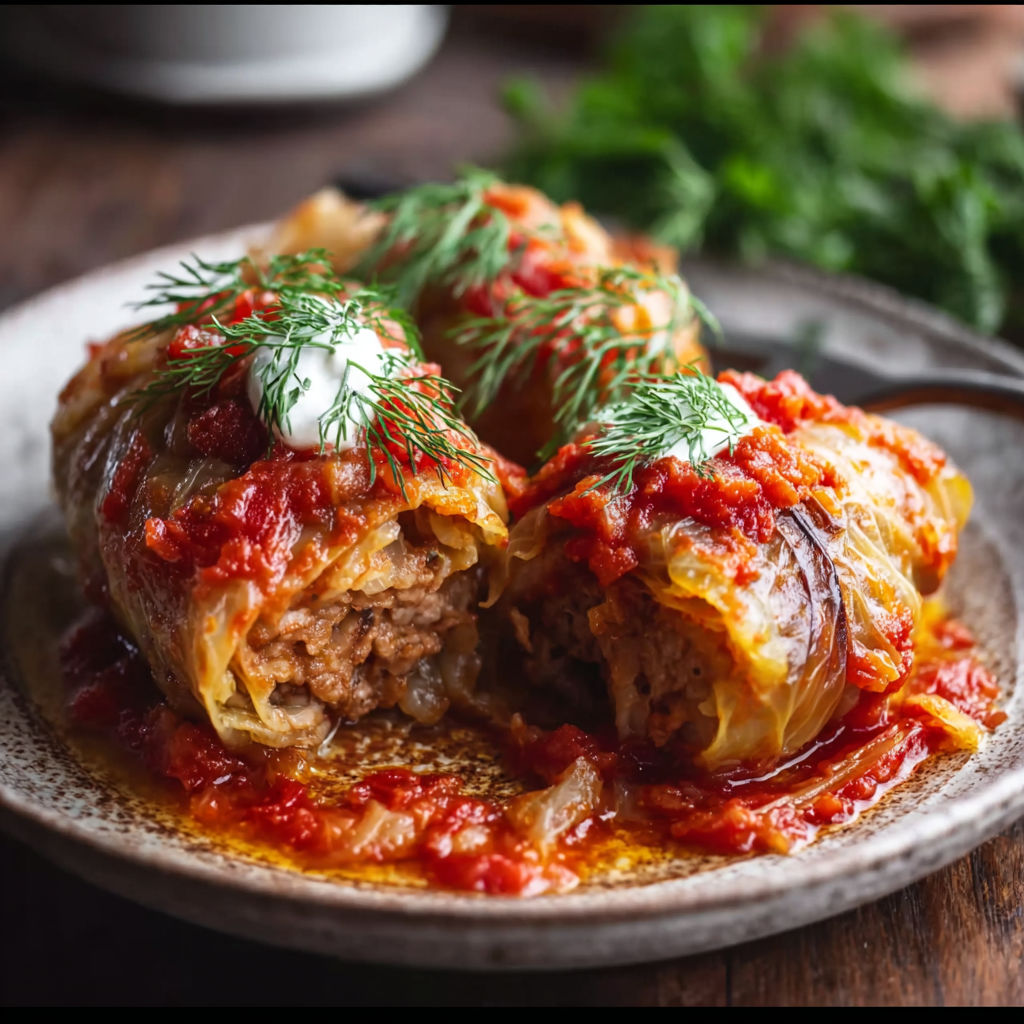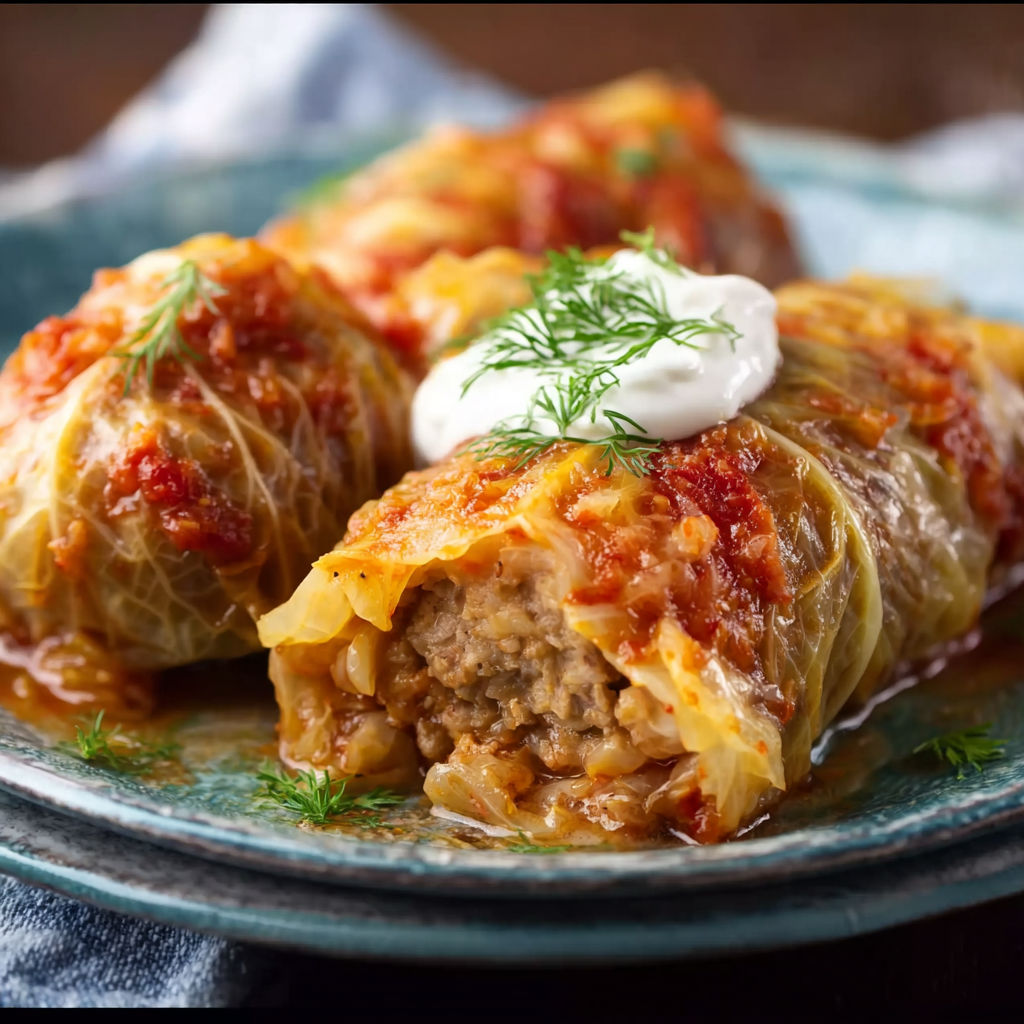 Pin
Pin
Golabki or Polish stuffed cabbage rolls are the kind of dinner that fills your kitchen with warmth and nostalgia. Layers of soft cabbage cradle a savory pork and rice filling all bathed in a tangy tomato sauce. This is a dish at the spirited heart of Polish home cooking made to gather the family and coax everyone back for seconds.
I first learned to make golabki with my grandmother beside me folding each cabbage leaf. That tradition turned weekend afternoons into something special and now my own family always asks for this dish when the weather turns cold.
Gather Your Ingredients
- Ground pork shoulder: Provides rich meaty flavor and stays juicy even after simmering. Look for freshly ground pork with some fat marbling
- White cabbage: Becomes sweet and tender after blanching. Pick a firm green head with unblemished outer leaves
- Cooked rice: Absorbs flavors and keeps the filling light. Medium or long grain rice works best and leftovers are perfect here
- Onion: Adds natural sweetness and depth. Chop finely and sauté until just golden
- Vegetable oil: For sautéing the onions and helps soften the aromatics
- Bread crumbs: Bind the filling and prevent a dense texture. Opt for plain fine crumbs
- Salt and pepper: Enhance all the flavors. Taste your filling before rolling
- Chicken or beef broth: Forms the base for the sauce. A homemade or good quality store bought broth makes a difference
- Tomato paste: Gives the sauce bold color and tang. Check for paste with no added sugar for authentic taste
- Paprika: Lends a subtle smokiness. If you have it choose Hungarian or sweet paprika
- Dried oregano and thyme: Bring herbal notes that round out the dish. Use dried for the sauce as it holds up to simmering
- Heavy cream (optional): Creates a richer creamier sauce. I sometimes add a splash for extra comfort
How to Make It
- Prep the Cabbage:
- Remove the core of the cabbage and discard any tough outer leaves. Blanch the whole head in gently boiling water for about five minutes just until leaves loosen and soften. Allow to cool slightly before peeling off leaves one by one. Trim the thickest part of each vein for easier rolling
- Sauté the Onion:
- Heat oil over medium in a skillet and add finely chopped onion. Stir occasionally and let the onions get translucent and soft but not brown. Set aside to cool so they do not overcook the filling later
- Mix the Filling:
- In a large mixing bowl combine ground pork cooked and cooled rice sautéed onions plain breadcrumbs salt and pepper. Mix with clean hands until just combined for tender results
- Roll the Cabbage:
- Take one prepared cabbage leaf and place a generous spoonful of filling at the base. Tuck in the sides and roll up tightly finishing with the seam side down. Repeat until all filling is used
- Make the Sauce:
- In a separate bowl whisk tomato paste into chicken or beef broth until smooth. Add in dried oregano paprika and thyme. For a creamy finish slowly stir in heavy cream if using
- Assemble and Cook:
- Nestle the stuffed cabbage rolls closely together in a casserole dish or large pot seam side down. Pour the sauce evenly over the top ensuring all rolls are covered. Cover with a lid or foil and simmer gently on the stovetop or bake at three hundred seventy five degrees for one to one and a half hours until cabbage is fork tender and the filling is cooked through
- Serve:
- Use a spoon to drizzle extra sauce over the hot rolls when serving. These pair beautifully with mashed potatoes or rustic bread to soak up every bit of sauce

My favorite part is that first taste of the sweet softened cabbage after it absorbs the sauce. One of my fondest memories is prepping cabbage in my kitchen with my daughter as she learned to roll her first golabki. These little traditions add layers of joy to the dish.
Flavor Boosters
Store leftovers in an airtight container in the fridge for up to three days. The flavors deepen as they rest making the next day’s meal even better. You can freeze cooked golabki in a single layer let them thaw overnight in the fridge then reheat gently on the stove top or oven covered with extra sauce to prevent drying. To avoid soggy rolls do not refreeze golabki more than once after cooking.
Serving Suggestions
Golabki is often served as a main course with mashed potatoes or a dollop of sour cream on the side. A crisp cucumber salad or pickled vegetables are traditional sides offering a refreshing contrast. For a festive meal add a loaf of light rye bread to sop up all the tomato sauce.
Creative Twists
Ground turkey or beef can replace pork for a lighter version. Quinoa or barley work well in place of rice for extra texture. For a vegetarian twist swap ground pork for lentils sautéed mushrooms and grated carrot for a hearty plant based filling.

Many cooks find that golabki is their ticket to connecting with family roots and traditions. Kids love helping roll the filling and the leftovers are always a bonus for lunchboxes or cozy evening suppers.
Common Questions About This Recipe
- → Can I use beef instead of pork for the filling?
Yes, ground beef or a mix of beef and pork works well for stuffed cabbage rolls, offering a slightly different flavor.
- → How do I prevent cabbage leaves from tearing?
Blanching the cabbage softens the leaves, making them pliable and easier to roll without tearing.
- → What sides pair well with these cabbage rolls?
Mashed potatoes, crusty bread, or a simple salad complement the hearty flavors of this dish.
- → Can I make golabki in advance?
Yes, assemble the rolls ahead of time and bake when ready. They also reheat well for leftovers.
- → Is it possible to freeze cooked cabbage rolls?
Absolutely! Cool completely, wrap tightly, and freeze. Reheat gently in the oven with extra sauce.
